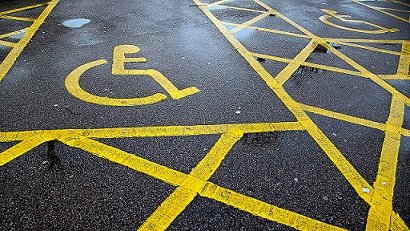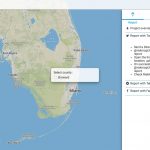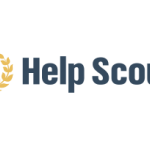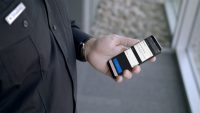Crowdsourced Knowledge Is Helping People With Disabilities Navigate Life
These days GPS technology can get you as close as about 10 feet from your destination, close enough to see it—assuming you can see.
But those last few feet are a chasm for the blind (and GPS accuracy sometimes falls only within about 30 feet).
“Actually finding the bus stop, not the right street, but standing in the right place when the bus comes, is pretty hard,” says Dave Power, president and CEO of the Perkins School for the Blind near Boston. Helen Keller’s alma mater is developing a mobile app that will provide audio directions—contributed by volunteers—so that blind people can get close enough to the stop for the bus driver to notice them.
Perkins’s app is one of 29 projects that recently received a total of $20 million in funding from Google.org’s Google Impact Challenge: Disabilities awards. Several of the winning initiatives rely on crowdsourced information to help the disabled—be they blind, in a wheelchair, or cognitively impaired. It’s a commonsense approach to tackling big logistical projects in a world full of people who have snippets of downtime during which they might perform bite-size acts of kindness online. But moving these projects from being just clever concepts to extensive services, based on the goodwill of volunteers, is going to be quite a hurdle.
People with limited mobility may have trouble traversing the last few feet between them and a wheelchair ramp, automatic doors, or other accommodations that aren’t easy to find (or may not even exist in some places). Wheelmap, based in Berlin, is trying to help by building online maps of accessible locations. Its website incorporates crowdsourced data. The site lets users type in a city and search for accessible amenities such as restaurants, hotels, and public transit.
Paris-based J’accede (which received 500,000 euros from Google, which is the equivalent of about $565,000) provides similar capabilities in both a website and an app, with a slicker design somewhat resembling TripAdvisor.
Both services have a long way to go. J’accede lists 374 accessible bars/restaurants in its hometown and a modest selection in other French cities like Marseille. “We still have a lot of work to do to cover France,” says J’accede’s president Damien Birambeau in an email. The goal is to go global though, and the site is available in English, German, and Spanish, in addition to French. Likewise, Wheelmap (which got 825,000 euros, or $933,000) performs best in the German capital of Berlin and cities like Hamburg, but is less useful in other places.
These sites face the same challenge as many other volunteer-based, crowdsourced projects: getting a big enough crowd to contribute information to the service. J’accede hopes to make the process easier. In June, it will connect itself with Google Places, so contributors will only need to supply details about accommodations at a site; information like the location’s address and phone number will be pulled in automatically. But both J’accede and Wheelmap recognize that crowdsourcing has its limits. They are now going beyond voluntary contributions, setting up automated systems to scrape information from other databases of accessible locations, such as those maintained by governments.
Wheelmap and J’accede are dwarfed by general-interest crowdsourced sites like TripAdvisor and Yelp, which offer some information about accessibility, too. For instance, among the many filters they offer users searching for restaurants—such as price range and cuisine type—TripAdvisor and Yelp both offer a Wheelchair Accessible checkbox. Applying that filter to Parisian establishments brings up about 1,000 restaurants on TripAdvisor and 2,800 in Yelp.
So what can Wheelmap and J’accede provide that the big players can’t? Details. “A person in a wheelchair, for example, will face different obstacles than a partially blind person or a person with cognitive disabilities,” says Birambeau. “These different needs and profiles means that we need highly detailed information about the accessibility of public places.”
(TripAdvisor and Yelp sent us general statements emphasizing their commitment to users with disabilities.)
Other information that the disabled need is even harder to come by.
The Perkins School aims to tackle public transit information for the visually impaired using a $750,000 grant from Google.org for pilot programs in Boston and another city yet to be decided. Using an iPhone app, volunteers will be able to dictate directions to bus stops that blind users can listen to when they’re close to a destination. The app might start its users off at locations that are easier to find, like a telephone pole at an intersection. Directions might then tell people to walk a few paces west until they come to a rusty pole that marks the bus stop, for instance. The app might also specify that the pole is close to a park bench. The service could expand to other destinations, like subway stops and businesses.
“If people who are visually impaired can’t find the bus stop easily, how are they going to find Starbucks, J Crew, Neiman Marcus?” asks Power.
Perkins’s biggest challenge will be the same one facing Wheelmap and J’accede—getting enough volunteers to participate and add information to the tool. Perkins is just beginning to think about overcoming that issue. “Maybe you could be the ‘mayor’ of San Francisco if you contribute the most bus stop data,” posits Power, echoing a strategy used by mobile social app Foursquare—a company that recently saw its market value plummet.
There is some reason for optimism, though. The app Be My Eyes (not associated with Google or Google funding) allows the blind and visually impaired to place video calls to a pool of volunteers, who then read or describe out loud items such as a product label or street sign. Launched in January 2015, Be My Eyes has picked up about 27,000 users and 356,000 volunteers in more than 140 countries.
The quantity of contributors is less important than the quality for The Arc of the United States, a nonprofit with 120,000 staff at 660 locations serving people with cognitive impairments such as cerebral palsy, epilepsy, developmental delay, and autism. The Arc has received $1.4 million from Google.org to expand its Arc Tech Toolbox site, which crowdsources reviews for a wide variety of assistive products, ranging from apps that help people work with money to a device that lets people with speech disabilities press a button to play prerecorded messages. The Toolbox launched in beta last summer.
Most items in the Toolbox are designed for people with cognitive disabilities. Android app AAC Autism Talk Now, for instance, helps autistic children learn language pacing and phrasing to help make them easier to understand.
App reviews on iTunes or Google Play don’t provide the kind of information needed by people with disabilities. But the pool of people who can evaluate these products is small. The Arc is focusing on input from teachers, specialists like speech pathologists, and family members of people with disabilities. Abe Rafi, director of Digital Strategy & Online Services at the Arc, says that the Toolbox has a long way to go before it comes out of beta. One of the biggest planned changes, made possible the Google.org grant, is the development of an algorithmic recommendation system that will hopefully be easy enough that the very people who need the products in the Toolbox can make recommendations themselves.
Rafi acknowledges the challenge of building up contributors to the site and is cautions about promising too much too soon. “We are not loudly promoting it to the world at large. We’re kinda seeing how this community of providers and families of people with disabilities come to it naturally,” he says. “One of the best ways to kill an OK product is good marketing.”
Fast Company , Read Full Story
(48)











